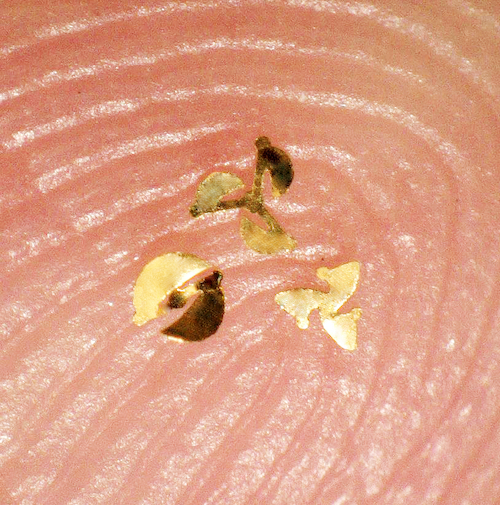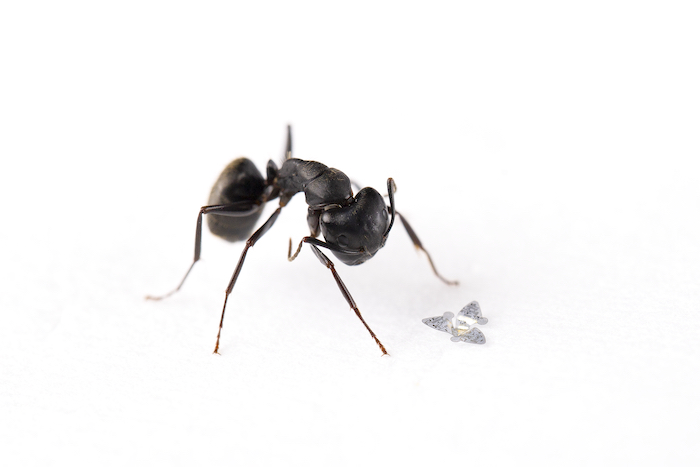When it comes to a human-made flying vehicle, how small is small?
Well, the Ingenuity helicopter on Mars is pretty small. And back here on Earth, many of us have seen drones out there that are the size of a toddler's shoe. There is even one drone the size of a hummingbird that has been invented for the purpose of reconnaissance and spying!
But even that is a behemoth compared to a new innovation from engineers at Northwestern University in Illinois, U.S.A. Presenting the microflier, a literal flying microchip that is the smallest flying structure ever built by humans. Zip!
Inspired by plants, not animals

Despite its size, this microchip is a pretty complex device. (Northwestern University)
Perhaps not surprisingly, these tiny devices are inspired by nature. But its designers didn't look to animals, like insects. Instead, they looked to plants and the ways that the seeds of dandelions or maple trees are made to ride the wind and be distributed over long distances and across wide areas.
This design means that these microfliers can't take off or be controlled like a drone. But they do respond very well to a breeze. The presence of wind sends them into a spin, much like helicopter blades. The hope is that these flying microchips can be dispersed over a large area and used to gather data for research. Thanks to the microchips at their centre, they can be programmed to investigate all sorts of things. Temperature, the presence of viruses, humidity, levels of pollution, and more!
Back to nature

Yes, that is a closeup of someone's fingertip holding these microfliers! (Northwestern University)
Of course, while these things may be inspired by nature, they are not natural themselves. And in an age where pollution—especially by microplastics—is such a huge concern, you can understand why not everyone would be excited about tossing a bunch of microchips the size of a grain of sand across the landscape. Fortunately, the designers of the microflier agree.
They have investigated using electronics that are capable of dissolving in water, as well as making the other parts of the structure out of compostable and biodegradable materials. In the end, these fliers would dissolve easily and harmlessly into materials that are natural and don't upset the ecosystem.
Watch Northwestern's John A. Rogers describe the microflier and the process of its invention in the video below.
 "Fancy meeting you here, microflier!" An ant next to an actual flying microchip. (Northwestern University)
"Fancy meeting you here, microflier!" An ant next to an actual flying microchip. (Northwestern University)









